
What to see in Alcantarilla
Los Arcos Aqueduct
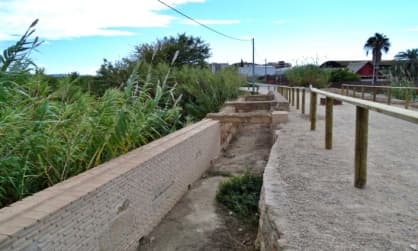
Also known as the Cequeta Aqueduct, this is a work of architecture and civil engineering specially designed to improve the water supply in the city. It was declared a National Historic-Artistic Monument, dates from the 15th and 16th centuries, and is located in the surroundings of the La Huerta Museum.
According to different recent archaeological excavations, architectural structures of Roman origin, coins, and ceramics have been found in the work, testifying to the Roman occupation in this area.
According to different recent archaeological excavations, architectural structures of Roman origin, coins, and ceramics have been found in the work, testifying to the Roman occupation in this area.
St. Peter's Church
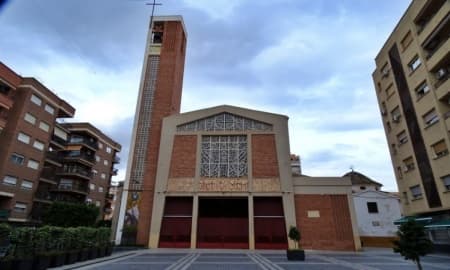
This was built between the 60s and 70s on the site of the old Parish Church of Saint Peter, from the 16th century (the Renaissance-style building demolished in 1961).
It is one of the most modern, spacious, and representative buildings, designed by the architect Enrique Sancho Ruano, who preserved the Chapel of Aurora from the old construction, built at the end of the 18th century. Currently, it has various works by local sculptor Anastasio Martínez as well as several representative artistic samples of contemporary art, such as the polychrome stained glass windows of the painter Mariano Ballester.
It is one of the most modern, spacious, and representative buildings, designed by the architect Enrique Sancho Ruano, who preserved the Chapel of Aurora from the old construction, built at the end of the 18th century. Currently, it has various works by local sculptor Anastasio Martínez as well as several representative artistic samples of contemporary art, such as the polychrome stained glass windows of the painter Mariano Ballester.
Church of the Assumption
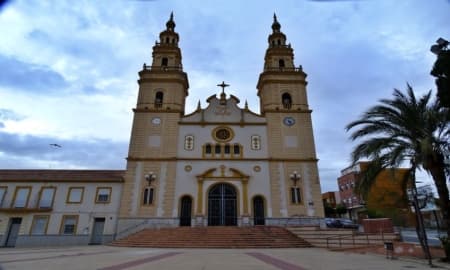
With a Murcian neo-baroque style, and built in the mid-20th century, this is a Catholic temple dedicated to the Assumption of the Virgin. It is located in the Campoamor neighbourhood and is made up of two immense and slender towers decorated with balustrades that can be seen in the distance, from anywhere in the town.
It was decorated inside by painters directed by Miguel Meler Carmelet and inspired by the style of the 17th and 18th centuries.
It was decorated inside by painters directed by Miguel Meler Carmelet and inspired by the style of the 17th and 18th centuries.
Church of Saint Roch

This began as a hermitage and became one of the most representative religious temples in Alcantarilla. It has a patent baroque style and was erected in the 18th century. It has been restored on various occasions, allowing its pillars to be reinforced, some deficiencies corrected, and the most valuable characteristics of the temple to come to light, which remained hidden for many years.
Also, thanks to important modifications, the bell tower has been placed in its original place, just below its four-face clock.
Also, thanks to important modifications, the bell tower has been placed in its original place, just below its four-face clock.
La Huerta Museum
This is a site of great importance for tradition, considered a Site of Cultural Interest (BIC).
It has a popular Water Wheel that was traditionally used to raise water from shallow wells, in addition to the representation of a typical barrack of the time.
It is a meeting place with unique pieces that speak of the heart of a culture, with various axes: agriculture, anthropology, and the culture of water.
It has a popular Water Wheel that was traditionally used to raise water from shallow wells, in addition to the representation of a typical barrack of the time.
It is a meeting place with unique pieces that speak of the heart of a culture, with various axes: agriculture, anthropology, and the culture of water.
Alcantarilla Water Wheel
Like the La Huerta Museum, the Water Wheel of Alcantarilla has been established as an Asset of Cultural Interest since 1982. Its origin dates back to the 15th century and it was built in wood. However, it was replaced in 1956, when one of metal was installed.
Currently, we find a wheel with seventy-two buckets (thirty-six in each crown). These are pieces in charge of collecting the water and then emptying it into the canal so that it flows into the aqueduct.
Currently, we find a wheel with seventy-two buckets (thirty-six in each crown). These are pieces in charge of collecting the water and then emptying it into the canal so that it flows into the aqueduct.
Virgin of the Peace Hermitage

This is a building erected in the 18th century in honour of the Virgin of Our Lady of the Peace and declared as Asset of Cultural Interest (BIC).
It was made of masonry and consists of a rectangular nave with a barrel vault.
Its facade exhibits a bell tower and inside we find a neoclassical-style altar with a small chapel.
It was made of masonry and consists of a rectangular nave with a barrel vault.
Its facade exhibits a bell tower and inside we find a neoclassical-style altar with a small chapel.
Virgin of the Health Hermitage
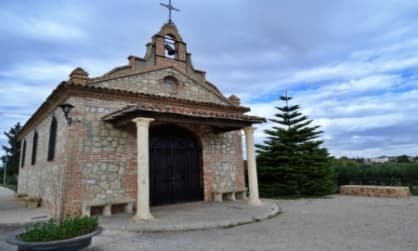
Built in the 70s in honour of the Virgin of Our Lady of the Health, it has a beautiful architecture of romantic inspiration and is built in stone.
Outside, we are greeted by a front porch supported by a pair of columns and a facade in the style of traditional neoclassical pediments.
This place houses various paintings made by local artists that reflect both scenes from the life of the Virgin as well as her appearance on the Las Pilas Bridge.
Outside, we are greeted by a front porch supported by a pair of columns and a facade in the style of traditional neoclassical pediments.
This place houses various paintings made by local artists that reflect both scenes from the life of the Virgin as well as her appearance on the Las Pilas Bridge.
Cayitas House
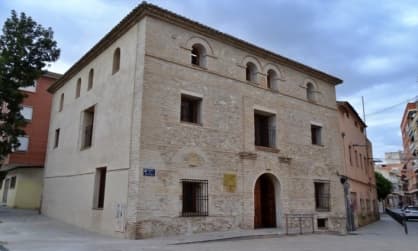
This iconic three-story house, dating from the 18th century, is regarded as one of the most emblematic buildings in Alcantarilla. The initial intention of its construction was the establishment of the headquarters of the Tribunal of the Holy Office, in charge of judging cases that affected the correct interpretation of faith at the time.
In 1982, it was declared a National Historic-Artistic Monument.
Its name is inherited from its former owners.
In 1982, it was declared a National Historic-Artistic Monument.
Its name is inherited from its former owners.
What to see in the Huerta de Murcia











